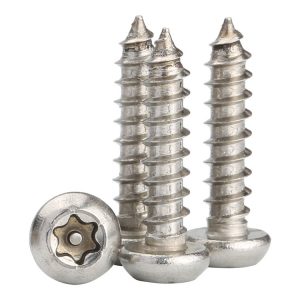What are the surface passivation requirements for security screws stainless steel?
As long as the screw fasteners are surface treated, they will basically be processed according to the technical requirements of the surface treatment that needs to be done, instead of doing it yourself. What is the surface passivation requirement for security screws stainless steel?

The security screws stainless steel is used for passivation treatment mainly to prevent the chromium-rich oxide film of various types of stainless steel from appearing in the natural environment, resulting in chemical treatment of increasing surface thickness. And in order to meet the requirements of the salt spray test.
Passivation state: The state of the inactive chemical reaction of the stainless steel surface.
Security screws stainless steel should be degreased and cleaned prior to passivation.
Technical conditions for pickling
| Group |
Chemicals |
Concentration% |
Temperature℃ |
Time exposed in the new slot(min) |
| A2 |
|
20~30 |
20~60 |
10~30 |
| A3 |
| A4 |
| A5 |
| C3 |
| F1 |
|
8~11 |
60~80 |
5~30 |
| A1 |
|
10~15 |
20~60 |
10~30 |
| C1 |
| A4 |
|
8~11 |
60~80 |
5~30 |
After pickling, the screw fasteners should be passivated.
Passivation technical conditions
| Group |
Chemicals |
Concentration% |
Temperature℃ |
Time exposed in the new slot(min) |
| A2 |
|
20~50 |
20~40 |
10~30
|
| A3 |
| A4 |
| A5 |
| C1 |
| F1 |
| A1 |
|
25~35 |
15~40 |
| C4 |
| A1 |
|
15~25 |
| C4 |
|
2~6 |

If you want to customized security screws stainless steel, please send an email: annie.li@szsst88.com